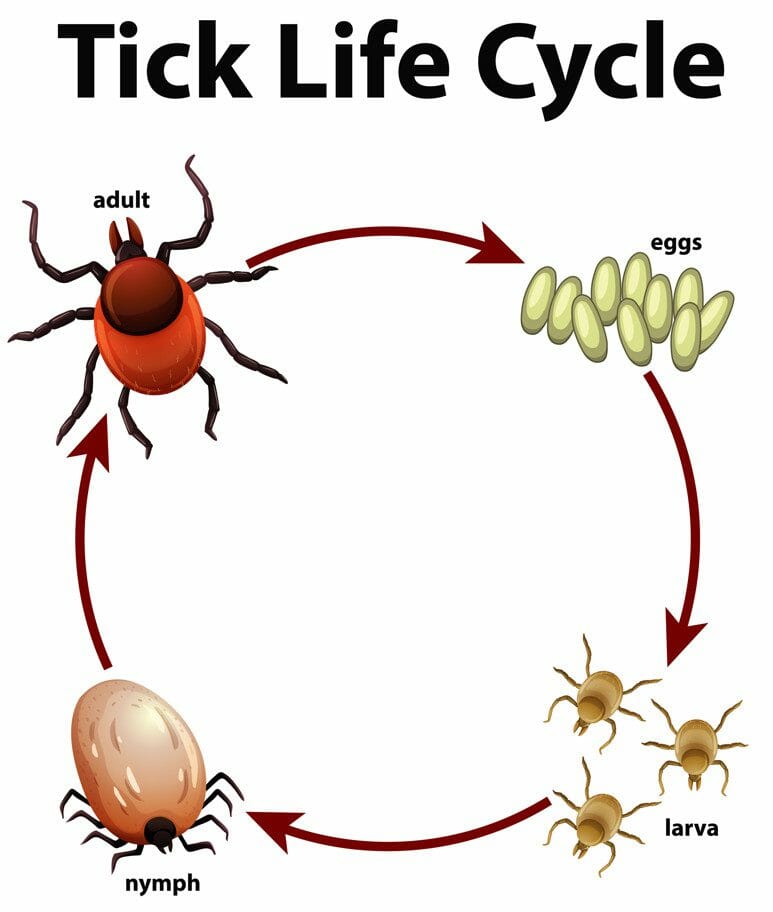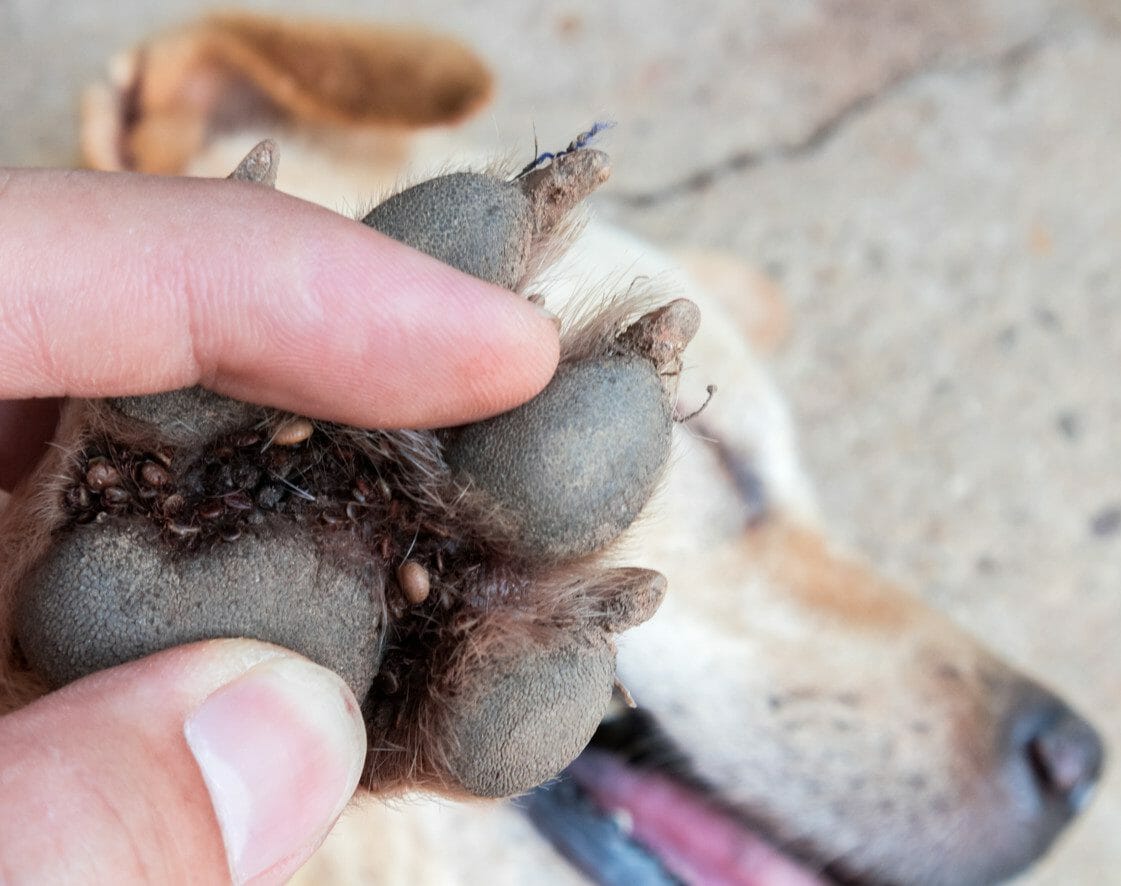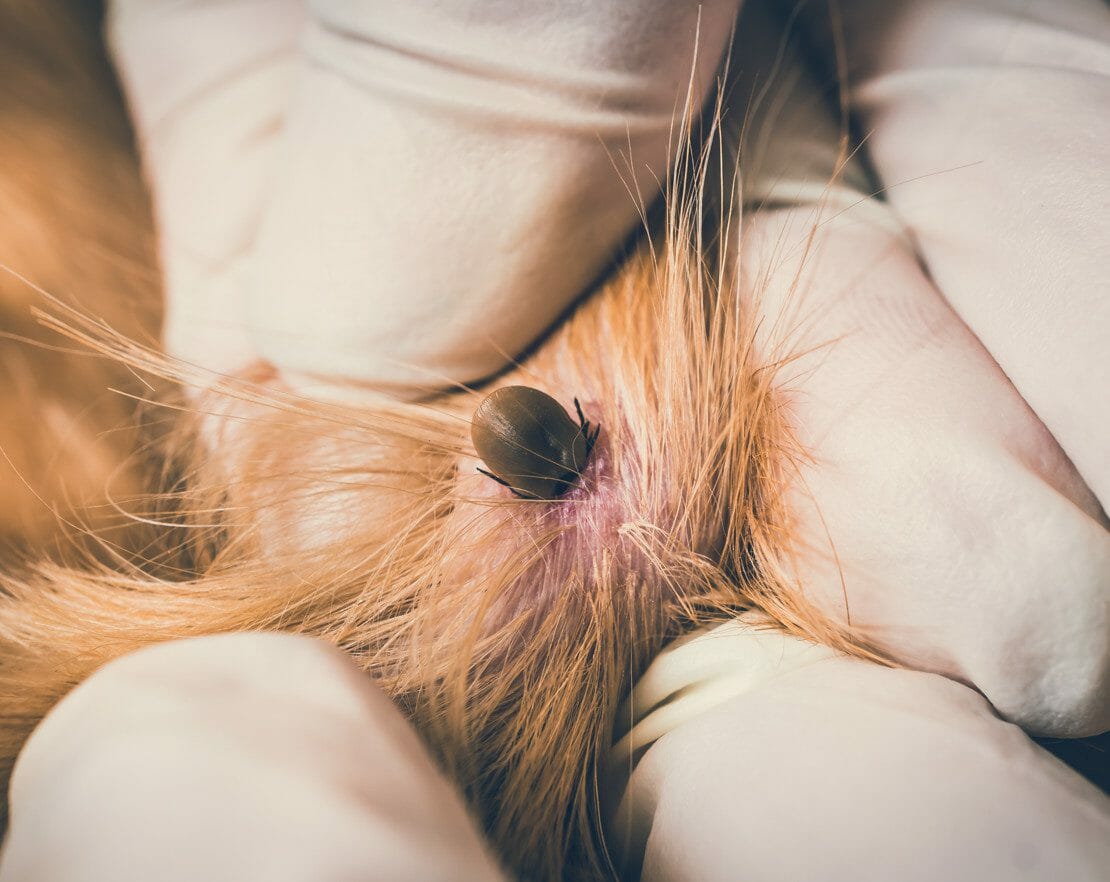How to Get Rid of Ticks
Although ticks are widely known to commonly afflict both humans and animals, ticks on dogs are pesky parasites that often go undetected for a few days or up to a week at a time. Ticks are even more concealed if your pup has a thick coat of fur.
Signs of Ticks on Dogs
Here are some universal indications that your dog may have a tick:
- A prolonged fever
- Lethargy or weakness
- Bites and scabbing
- Constant head-shaking
- Noticeable but small bumps in fur
Many of these symptoms may be indicative of other illnesses or conditions (such as parvo), so it is important to ensure ticks are the sole cause of the symptoms. If one or more of these signs are present, a thorough inspection of your dog should be done by you or your vet.
Ticks are especially prevalent at certain times of the year. Summer and fall, otherwise known as “tick season,” are seasons when pet owners should be aware of high tick populations. Areas that are warm all year may have higher occurrences of ticks. Because of the high frequency of ticks in these places, pet owners living in warmer climates should be well-versed in how to get rid of ticks. Although the warmer seasons of the year foster more ticks, vets recommend that flea and tick prevention for dogs be used year-round.

What Are Ticks?
Ticks, also known as dog ticks, are a type of arachnid (like spiders and mites). Unlike other insects, they have 8 legs and no antenna. Ticks on dogs attach firmly to the dog’s body and consume their blood for days at a time. As they do this, they swell up to about the size of a pea.
Contrary to popular belief, ticks are physically unable to jump. They utilize plants, low-hanging branches, or grass to put them in an optimal place to latch onto your pup as it brushes past the vegetation.
There are two main types of ticks:
- Hard Tick (American Dog Tick): Resembling a seed, this tick is covered in a hard shell. This type of tick afflicts pets like dogs and cats.
- Soft Tick: Resembling a raisin, this tick has no shell. They are more frequently found on birds.
Because of their ease of access to the bloodstream and their mobility, ticks on dogs are known to be carriers of disease. This can bring about dangerous consequences for the dog. Lyme Disease, Ehrlichiosis, and Rocky Mountain Spotted Fever are some of the more common diseases carried by ticks.
Where Do Ticks Lay Eggs?
 Ticks have a lifecycle consisting of four stages:
Ticks have a lifecycle consisting of four stages:
- Egg
- Larva
- Nymph
- Adult
Once a tick is firmly attached to the host, they begin to breed. When the time comes to lay its eggs, the tick leaves the host and lays the eggs on the ground. Between 3,000 and 6,000 ticks are hatched on the ground to begin the vicious cycle all over again.
How Do Ticks Reproduce?
The male tick usually latches onto a host to feed and mate. Once the male has fed enough on the host, it will mate with as many females as it can before it dies. After the female spends her time carrying her eggs and laying them, she then dies as well. This life and reproduction cycle can last up to two years.
How to Check Your Dog for Ticks
It is critical to learn how to check dog for ticks, which will prove to be more than useful if you live in a generally warm area year-round. The best way to check your dog is to regularly comb through and part the hair of the dog to see if any scabs or bumps are seen.
If a tick is spotted, it is recommended that one learn how to get rid of ticks from a reputable source before attempting to do so. Many people are unaware that they often leave body parts when attempting to remove a tick, and this may cause further infection.
Ticks tend to inhabit the warmer parts of the host’s body. These are some of the most common areas ticks bury themselves in dogs:
- Eyelids
- Groin area
- Underneath front legs
- Within the ears
- Between their toes
- Under their collar
The ticks on dogs ear can be easily missed, especially if your dog has more floppy ears. However, this is one area ticks love to hide. Even more, the ticks on dogs paws are the closest body part to the ground, where ticks can easily be transferred to. This should also be a place carefully examined after a long walk or hike.

How To Remove A Tick From A Dog
When people want to learn how to get rid of dog ticks fast, they may run into the dilemma of different resources offering difference solutions. Unless you are very familiar with removing ticks from dogs, most vets suggest getting a dog professionally cared for at a vet’s office. This way, the vet can also check for any infections the dog may have acquired from the tick.
Several resources state that a quick pull of the tweezers will remove tick from dog. Make sure to grab the base of the tick as close to the dog’s skin as possible and pull with a steady straight motion. Other resources regarding how to kill ticks on dogs recommend using a tick removal tool (such as the Tick Twister), which removes a tick without squeezing it. Once there has been a tick bite on dog, clean the area with antiseptic and keep an eye out for signs of possible infection.
After removing the tick, examine it to ensure that all body parts have been removed, especially the head. If the head of the tick is still in the dog, do not try to dig it out. Instead, take the dog to the vet to have remaining pieces removed.
If the tick is still alive after it has been removed, put it in a small contained filled with isopropyl alcohol, which will kill the tick. It is recommended keeping the tick in case the dog begins to show signs of illness. That way, the tick can be examined by a vet to come up a possible diagnosis.

How to Treat Ticks on Dogs
For dogs infected by carriers of disease, some home remedies for fleas and ticks as well as prescription tick medicine for dogs is available. Some of the best medications will also kill fleas on dogs. Most of these medications are available on sites such as Chewy.com. Some of the best tick medication are orally-administered medications. They include:
- NexGard (Afoxolaner)
- Bravecto (Fluralaner)
- Capstar (Nitenpyram)
- Comfortis (Spinosad)
Topical flea and tick medicine for dogs include Frontline, Advantage II, K9 Advantix II, Onguard Plus, and Revolution. Many people like the convenience of the Seresto flea and tick collar for dogs. This collar kills and repels fleas for 8 continuous months. The collar prevents tick infestations within 48 hours of application. The Seresto flea and tick collar is water-resistant and is still effective after getting wet. Consult your vet to see if one of these oral medications or the Seresto collar is right for your pup.

If you would rather try home remedies for ticks before resorting to more potent solutions, the following are some of the most widely used and proven home remedies:
- Rubbing citrus-based juice on the affected area
- Gently wash the area with soap and water
- Disinfect all areas your dog frequents regularly
- Use leg warmers or some type of clothing for dogs when going outside
- Tick collars
Although some of these may not work effectively for your dog, they are widespread methods to try. If nothing seems to be working, the vet is a phone call away.



